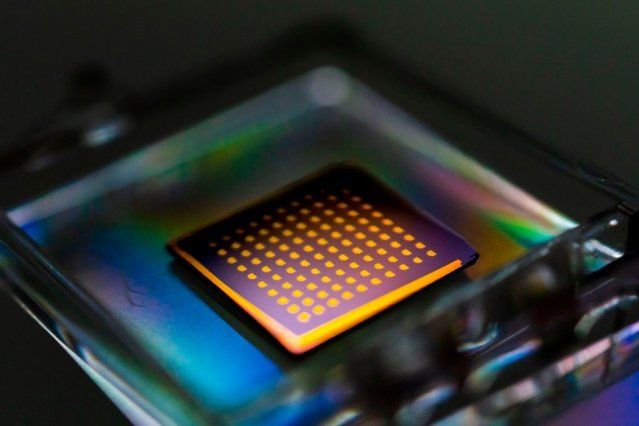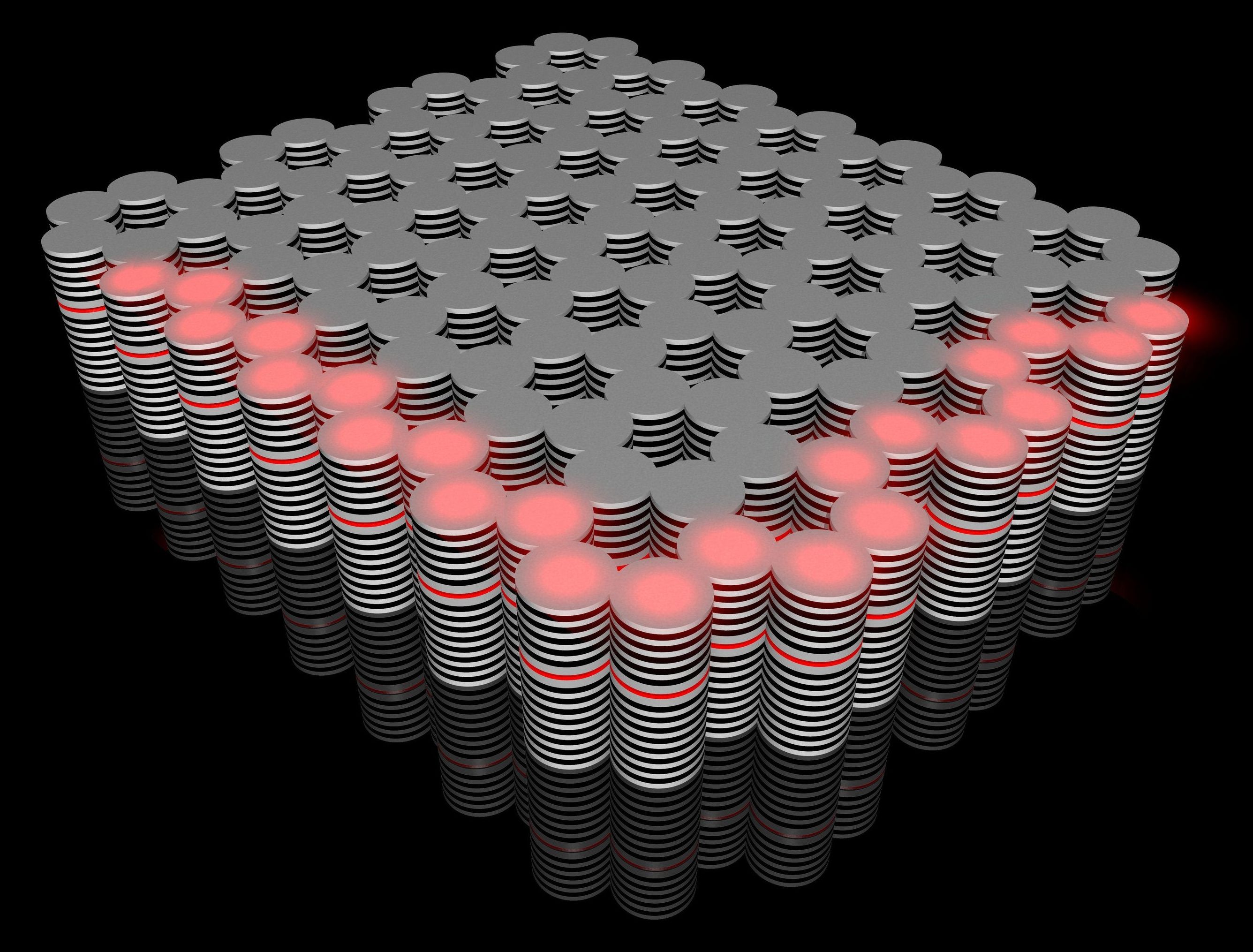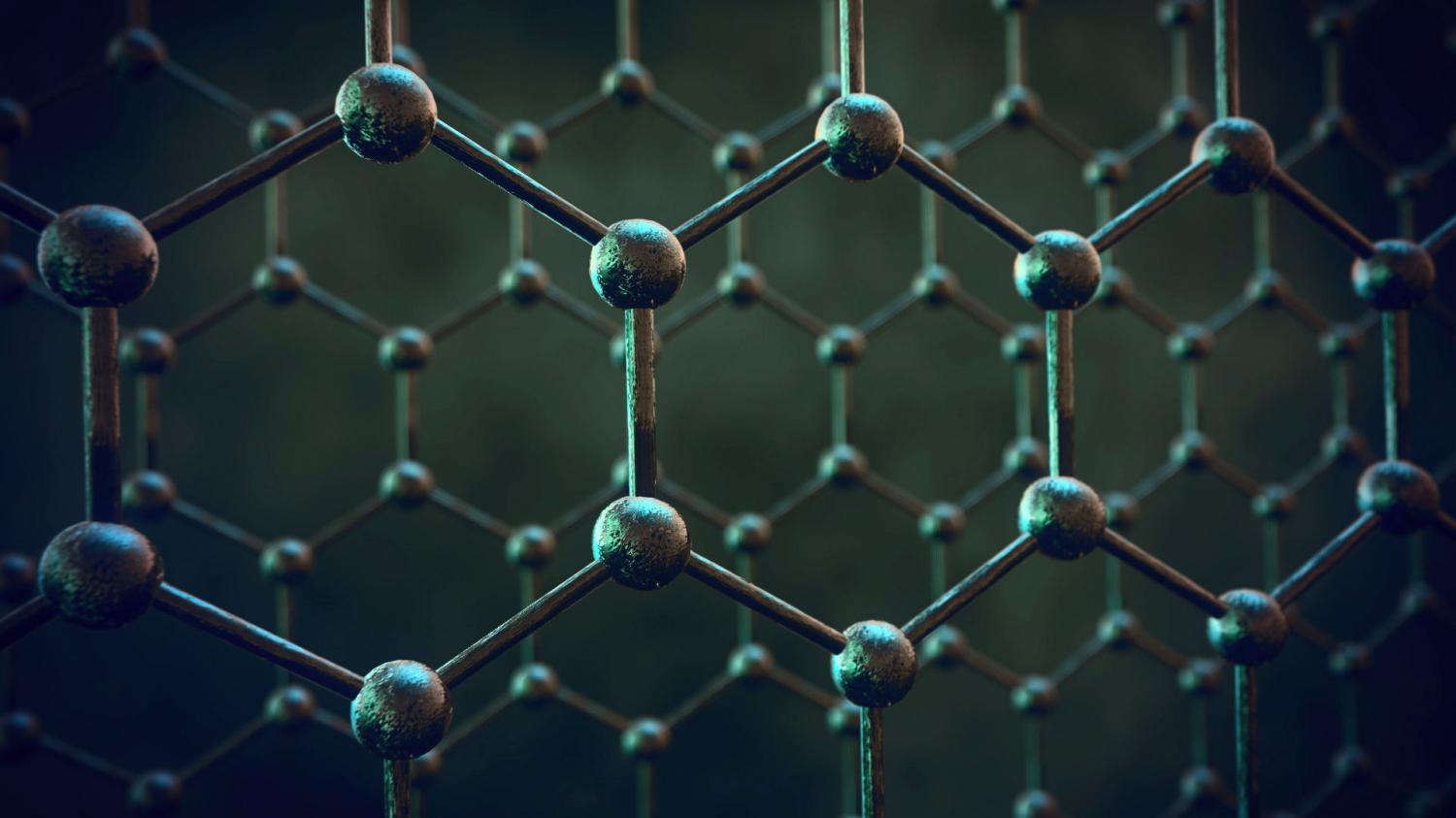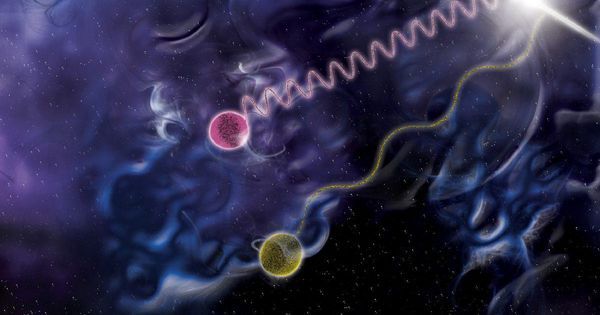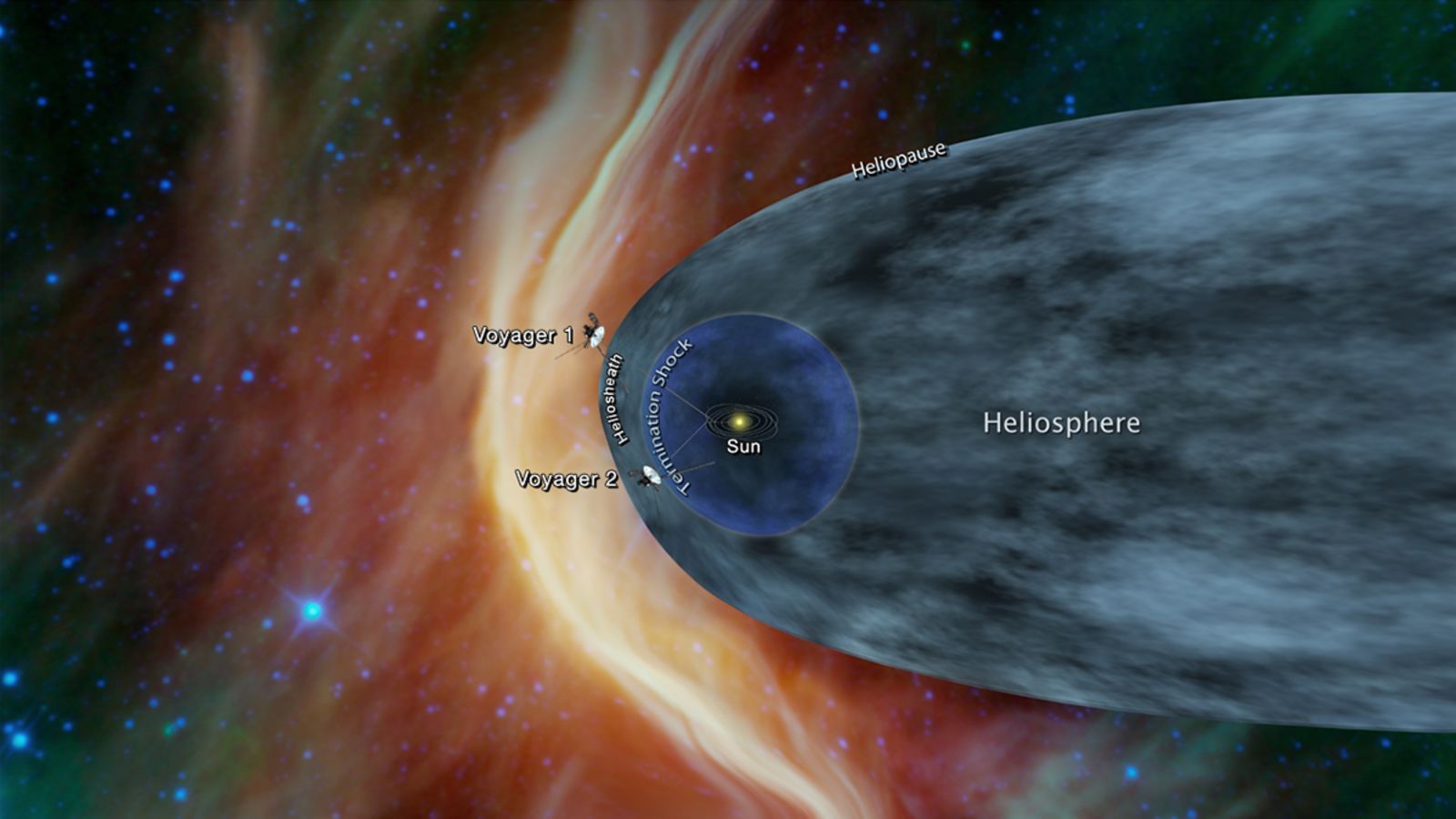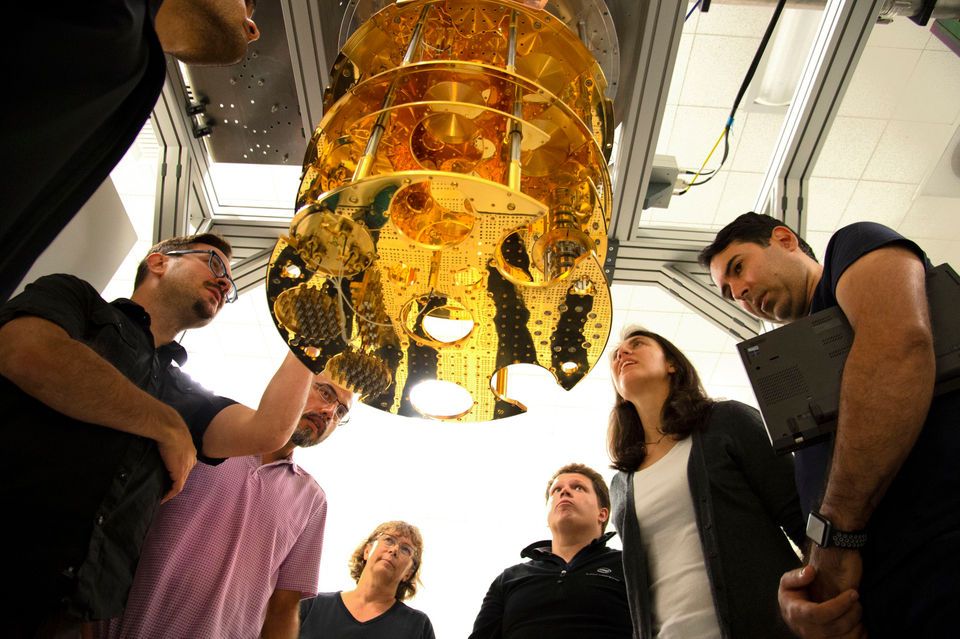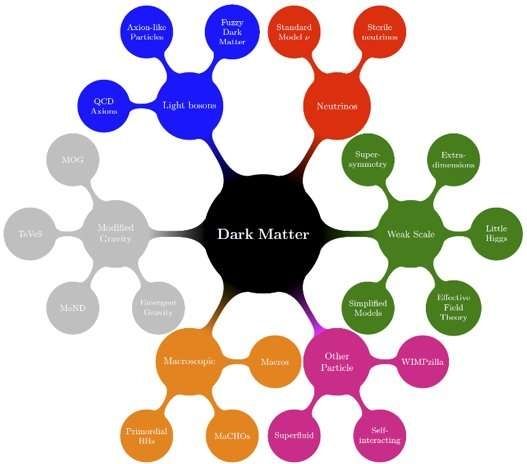Archive for the ‘particle physics’ category: Page 486
Oct 12, 2018
A novel topological insulator
Posted by Genevieve Klien in categories: materials, particle physics
For the first time, physicists have built a unique topological insulator in which optical and electronic excitations hybridize and flow together. They report their discovery in Nature.
Topological insulators are materials with very special properties. They conduct electricity or light particles only on their surface or edges, not the interior. This unusual characteristic could provide technical innovations, and topological insulators have been the subject of intense global research for several years.
Physicists of Julius-Maximilians-Universität Würzburg (JMU) in Bavaria, Germany, with colleagues from the Technion in Haifa, Israel, and Nanyang Technological University in Singapore have reported their discovery in the journal Nature. The team has built the first “exciton-polariton topological insulator,” a topological insulator operating with both light and electronic excitations simultaneously.
Oct 11, 2018
New half-light half-matter particles may hold the key to a computing revolution
Posted by Paul Gonçalves in categories: computing, particle physics
Scientists have discovered new particles that could lie at the heart of a future technological revolution based on photonic circuitry, leading to superfast, light-based computing.
Oct 10, 2018
The Universe Has A Speed Limit, And It Isn’t The Speed Of Light
Posted by Genevieve Klien in categories: particle physics, space
Nothing can go faster than the speed of light in a vacuum. But particles in our Universe can’t even go that fast.
Oct 10, 2018
Scientists forge ahead with electron microscopy to build quantum materials atom
Posted by Klaus Baldauf in categories: particle physics, quantum physics

A novel technique that nudges single atoms to switch places within an atomically thin material could bring scientists another step closer to realizing theoretical physicist Richard Feynman’s vision of building tiny machines from the atom up.
Oct 9, 2018
Voyager 2 Detects Hints That Interstellar Space Is Nearby
Posted by Genevieve Klien in categories: particle physics, space
Six years ago, the Voyager 1 spacecraft informed scientists that it had become the first man-made object to enter interstellar space. Now, Voyager 2 has begun to return signs that its own exit from the Solar System could be coming soon.
Two of Voyager 2’s instruments have measured an increase in the number of high-energy particles called cosmic rays hitting the spacecraft, according to a NASA release. Scientists think that the heliosphere, the region of particles and magnetic fields under the Sun’s influence, blocks some cosmic rays. An increase in their rate means that the probe could be nearing the heliopause, the heliosphere’s outer boundary.
Oct 5, 2018
Researchers Created ‘Quantum Artificial Life’ For the First Time
Posted by Genevieve Klien in categories: alien life, computing, particle physics, quantum physics
For the first time, an international team of researchers has used a quantum computer to create artificial life—a simulation of living organisms that scientists can use to understand life at the level of whole populations all the way down to cellular interactions.
With the quantum computer, individual living organisms represented at a microscopic level with superconducting qubits were made to “mate,” interact with their environment, and “die” to model some of the major factors that influence evolution.
The new research, published in Scientific Reports on Thursday, is a breakthrough that may eventually help answer the question of whether the origin of life can be explained by quantum mechanics, a theory of physics that describes the universe in terms of the interactions between subatomic particles.
Continue reading “Researchers Created ‘Quantum Artificial Life’ For the First Time” »
Oct 5, 2018
Intel plots a weird, spooky future in quantum computing
Posted by Genevieve Klien in categories: computing, particle physics, quantum physics, space
There, engineers are doing something strange. They’re freezing computer chips to 460 degrees Fahrenheit below zero, colder than deep space, to simulate the quantum structure of the universe.
At such extreme temperatures these remarkable chips, called qubits, enable scientists to peer into the complex, uncertain interaction of particles at the atomic level — an unseen world in which seemingly contradictory results can exist simultaneously, a place where simply observing an interaction can change it. Or wreck it altogether.
“Quantum — it’s something weird,” said Mike Mayberry, Intel’s chief technology officer and general manager of Intel Labs.
Continue reading “Intel plots a weird, spooky future in quantum computing” »
Oct 5, 2018
A new era in the quest for dark matter
Posted by Genevieve Klien in categories: cosmology, particle physics
Since the 1970s, astronomers and physicists have been gathering evidence for the presence in the universe of dark matter: a mysterious substance that manifests itself through its gravitational pull. However, despite much effort, none of the new particles proposed to explain dark matter have been discovered. In a review that was published in Nature this week, physicists Gianfranco Bertone (UvA) and Tim Tait (UvA and UC Irvine) argue that the time has come to broaden and diversify the experimental effort, and to incorporate astronomical surveys and gravitational wave observations in the quest for the nature of dark matter.
Over the past three decades, the search for dark matter has focused mostly on a class of particle candidates known as weakly interacting massive particles (or WIMPs). WIMPs appeared for a long time as a perfect dark matter candidate as they would be produced in the right amount in the early universe to explain dark matter, while at the same time they might alleviate some of the most fundamental problems in the physics of elementary particles, such as the large discrepancy between the energy scale of weak interactions and that of gravitational interactions.
Oct 4, 2018
Scientists Have Found a New Way of Storing Information in a Single Atom
Posted by Shailesh Prasad in categories: computing, particle physics
Humanity is producing so much data every single minute that we either need to slow down, or scientists need to crack the problem of finding better ways of storing that data ASAP. Now, new research has taken us one step closer to the ultimate in compact data storage: putting data on a single atom.
As the basic building blocks of all matter, atoms are the smallest object we could possibly store a bit (a 1 or a 0) on, potentially shrinking down the size of existing hard drives by about a thousand times or so, if we can figure out how to get it to work.
Scientists have already made progress in storing bits on atoms, but only on a small scale and in tightly controlled lab conditions, which usually means extremely cold setups.
Continue reading “Scientists Have Found a New Way of Storing Information in a Single Atom” »
